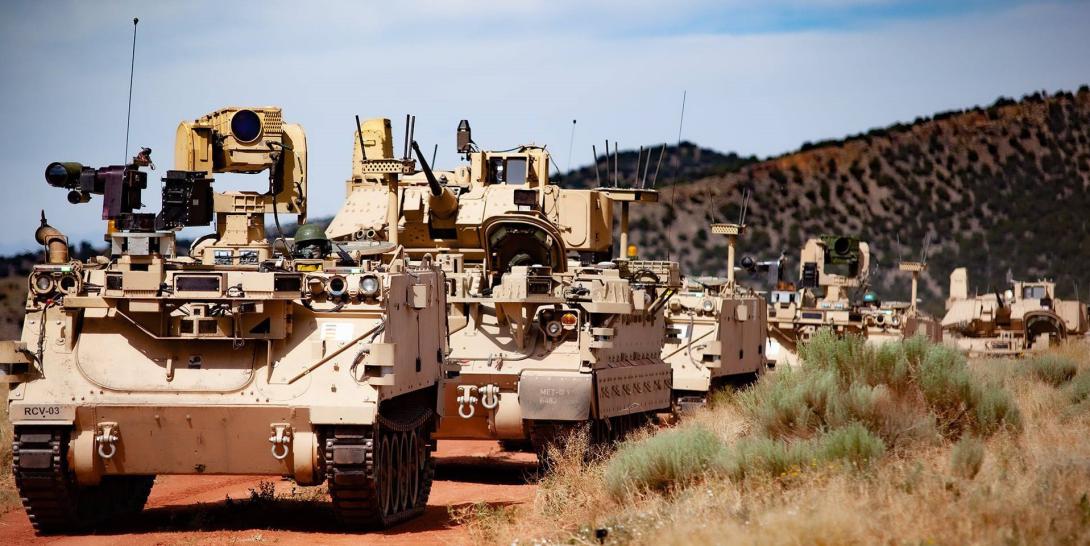Amid Budget Cuts, the Army Protects Future Capabilities
The U.S. Army released its annual budget last Friday, requesting $173 billion for fiscal year 2022. The amount reflects $3.6 billion in cuts from the service’s enacted FY2021 budget. The need to reduce expenditures had Army officials evaluating which priorities to continue to pursue and which efforts to drop. Funding for the service’s six modernization priorities and its so-called 31+4 signature efforts were not included in the cuts.
The Army’s request is part of President Biden’s Department of Defense total funding request of $715 billion, which is an increase of 1.6 percent over the FY21 enacted funding of $703.7 billion. And although the entire DOD budget request for Science and Technology’s Research, Development, Test and Evaluation, known as RDT&E, comes in at $112 billion—the largest amount ever—the Army’s RDT&E funds would be cut by $4 billion over FY21 enacted funds.
“We continue to protect our modernization priorities, and we will continue to focus on the Army’s priorities of people, readiness and modernization,” said Maj. Gen. Paul Chamberlain, USA, director of the Army budget. “We will ensure that your Army is going to be prepared to respond to any contingency, whether that be overseas or even stateside.”
In a roundtable call with reporters on June 1, Gen. Chamberlain explained the reasoning behind the cuts. One part comes from the planned drawdown of all U.S. troops from Afghanistan by October 1, allowing the Army’s Operation and Maintenance (O&M) request to be about $700 million less, given the service’s decreased posture in U.S. Central Command (CENTCOM).
“The Army budget for FY22 is consistent with the interim national security strategic guidance, it is consistent with OSD [Office of Secretary of Defense] priorities and messages,” the general specified. “It also is a little bit different than previous budgets, where now it is all a base budget. There is no OCO [Overseas Contingency Operation] funding. What once was OCO is now included as the base known as direct war or enduring costs.”
The remaining O&M funds will be used in part to improve readiness by funding home station training and 20 Combat Training Center (CTC) rotations. For FY22, the CTC efforts will include rotations to both Hawaii—to provide training in a jungle environment to support the Indo-Pacific Command—and to Alaska—in support of cold weather training and preparation per the service’s recently published Arctic strategy.
The service’s budget request, if enacted, would also fund its new Regionally Aligned Readiness and Modernization Model (ReARMM) that aims to integrate equipment fielding and training measures into the Army’s modernization program.
Notably, seven Army programs would be stopped or eliminated, including: the night vision imaging systems for aviators, Hellfire launchers, Joint Technology Center systems integration, 2.75-inch rocket launchers, lightweight counter mortar radar, multifunctional electronic warfare (MFEW) and the Spider Network munition systems—representing total cuts of about $48 million. Regarding the MFEW effort, “it had some issues and did not provide the full suite of capabilities we hoped it was going to produce,” the general stated. “So, we're going to reassess that program and see if, given a little more developmental time, that it is worth moving back into production.”
Additionally, 37 programs have or will be reduced, in areas such as, “our tanks and our Abrams,” said Gen. Chamberlain. “There are some munitions [funding cuts] in there, the JLTV [Joint Light Tactical Vehicles] is in there, some radios, and communications security equipment. Most of the reductions and divestments are tied to programs that with the funding being used, is to ensure that we maintain the funding for our 31 + 4 modernization efforts.”
The service will still pursue the modification or upgrade of 70 M-1 Abrams Tanks, costing $1 billion, and the purchase of 3,799 JLTVs, costing $1.1 billion. Gen. Chamberlain clarified that the cuts to the JLTV program will come from “lengthening the production timeline” of vehicles from its supplier, Oshkosh Defense. To gain data rights, the Army is still planning on pursuing a re-compete of the JLTV contract, and effort that is still on track, the general shared.
“One of the most important factors of being able to respond is our ability to know how much money we're going to get, when we're going to get it and that we're going to having a sustained amount of funding in the future as we continue to go forward,” Gen. Chamberlain added. “Those are some of the important critical parts of being able to put together a good solid budget, one that is able to respond to contingencies anywhere in the world. And that's what the Army is here for.”





Comments